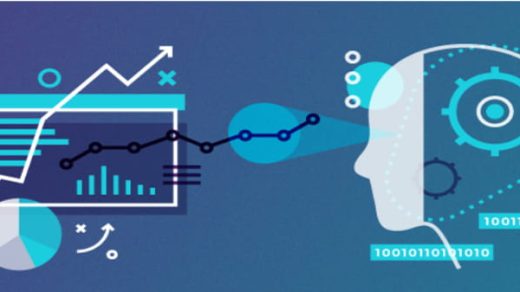
“The only constant is change,” as the common saying goes, but we’d want to personalize it for you and say “the only constant is changing technology”. It seems that as soon as your staff get used to a new system, innovation, or application, another one appears. This constant (but often improved) access to new technology can be beneficial to businesses, but it can be irritating to employees.
Knowing how to train personnel on a new technology or system is the key to success in this digital age. Hence, here are some of the top tips and recommendations for successfully and painlessly training your employees on a new technology.
Use a Multi-Pronged Strategy
To meet varied work needs and techniques, you need to use a variety of training options, ranging from textual instruction to live video teaching. It’s critical that CEOs set a good example by using the software or a new technology themselves and remind staff on a frequent basis of the help and available resources.
For instance, when implementing a new time and attendance system, a combination of text-based instructions, live demonstrations, and practice sessions should be used. This is a great method for ADP timeclock integration because it gives employees the opportunity to ask questions and practice using the system before they have to use it for real. Your employees will feel more confident and capable, which will lead to a smoother transition.
Sectionalize Your Instruction
It’s crucial to remember that not all workers learn in the same way. During the training program, it is critical to recognize that certain employees are greater at visual learning while others are better hands-on learners. It’s critical to have instructors who can recognize what your employees require in order to get everyone up to speed as quickly as feasible. Collaborating with IT services providers can be really helpful, to help your staff with specific questions on how to handle the new technology.
Regularly Evaluate their Skills
Annual skill assessments are an excellent method to keep staff focused and engaged. For practically any job to evolve, digital transformation necessitates basic competencies. Your company may quickly uncover measures to ensure employees are catching up with the competition by reviewing skill levels and gaps in skills. To keep up with the pace of technological innovation, employers must regularly refresh employee skills.
Make Sure to Communicate With End-User Before Purchasing New Technology
Nothing is more frustrating than incorporating new technology into your organization and doing thorough training sessions only to discover later that your staff isn’t fully using the new tech. As a result, it’s critical to solicit feedback from your users before deciding on a solution.
Setting up a demo before purchasing the tool is highly recommended since it allows employees to try on a range of features to determine their preferences. Training will become pointless if you don’t first figure out what’s effective for your staff, what isn’t, and what tools they wish they had.
Set Clear and Attainable Deadlines
Consideration for employees’ availability and already-packed workload is an important aspect of encouraging to adopt of new technologies. Make sure to provide plenty of notice about specific training deadlines and the methods you’ll employ to meet them.
If you are transitioning to new accounting software, for instance, you may provide employees with a link to the software and urge them to have a closer look before the next team meeting. You can urge them to raise any issues or queries during that meeting, and you can address them in the upcoming steps of training.
Use Training Incentives to Motivate Your Employees
The goal is to get to know your staff well enough to determine which incentives will encourage them to complete the training. For some, it’s as simple as receiving verbal acknowledgement for their effort. Others may require you to think outside the box in order to keep personnel motivated.
Perhaps staff can take off an hour or two earlier on a Friday afternoon at particular milestones in the training, or perhaps a nice catered meal or a breakfast is a nice component of training when achieving the set milestones. When the training is over, it could even be a $25 gift card.
Keep in mind that you know your employees and their preferences the best. The purpose of training incentives is to not only get personnel trained but also to acknowledge their efforts.
Integrate the Tool Into Your Company Culture
While it is not recommended to force adoption in a harsh manner, there is much to be said for gentle peer pressure. Hence, make sure to encourage managers and influencers to accept the new platform as the new norm for important functions including reporting, target planning, and assessment once employees have completed their training.
Fear of missing out (“FOMO”) is a strong motivator, and employees would not want to feel left out or behind, particularly now. Rather, make the new tool a component of your company’s culture to make it more permanent.
Obtain Insights Employers can obtain new knowledge after engaging with the new technology for a while. All you have to do now is collect data to determine how your employees are coping with the latest tech. A survey that everyone may fill out is one simple way to do just that.
Ascertain Availability and Accessibility
Employees frequently enlist the help of advocates, coworkers, or supervisors for assistance or to search up the system’s help section. Delays and expenditures are exacerbated by the loss of collaborative, productive time. The goal of technology is to reduce inefficiency, but without the proper training, it does the exact reverse. The ideal methods are in-app trainings or just-in-time solutions using microlearning modules.
Maintain context and specificity in your training. The user isn’t overburdened with information they don’t need with a role or feature structure. Users can readily get the essential training when it is organized into targeted modules with clearly delineated learning goals.
Make the Most of Digital Adoption Platform
It’s more difficult than ever to keep up with the continuous influx of new tools and applications. As these tools become more widely available, the difficulty of digital transformation, or teaching your staff how and why to utilize your digital tools, becomes even more difficult. You’ll be better positioned to deliver digital adoption by adopting a digital adoption platform (DAP) to assist you in making the most of your resources, systems, procedures, and employees.
What is a Digital Adoption Platform (DAP)?
DAPs (Digital Adoption Platforms) are pieces of software that make it easier to accept new technologies to enhance your digital transformation initiatives. They also serve as gathering, organizing, and sharing hubs for information such as learning materials and marketing statistics.
Issues will arise as soon as a new employee is recruited to your firm without the proper software and systems in place, and the ripple effect will spread throughout all departments.
According to IBM, only 21% of new employees stay at organizations that do not provide smart training solutions, and 42% of millennials think they are inclined to leave a job since they’re not learning quickly enough.
How can you change those numbers around and boost staff retention? By including Digital Adoption Platforms in your budget allocation and technology stack.

Author Bio: Tereza Peterson is an experienced digital marketer especially focused on the IT sector. She is fond of creating quality content based on detailed research and trustworthy statistics.




I’m much pleased with your good work. you have good knowledge of article writing and this article is amazing. I am waiting for your next article…. Thank you so much, this article had help me so much in my learning.